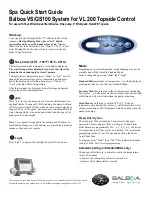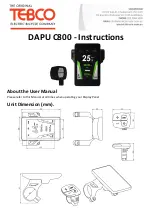
The SmartSensor V has internal surge protection, but the sensor must be properly grounded for the surge
protection to be effective. To achieve a good earth ground to the sensor follow the following steps:
1
Connect a grounding wire to the grounding lug on the bottom of the sensor.
2
Connect the other end of the grounding wire to the earth ground for the pole the sensor is mounted
on. If the pole is earth grounded, this can be done by drilling/tapping a hole in the pole and termi-
nating the grounding wire into this hole using a bolt, ensuring that a good electrical connection is
achieved. The grounding wire can also be terminated to a grounding rod at the base of the pole. Do not
run the grounding wire back to the main traffic cabinet.
6
Connect surge protection and power
If you bought a preassembled backplate, simply mount it in the main traffic cabinet, then route the sensor’s
cable into the cabinet and terminate the wires into the blocks according to color. If you don’t have a preas-
sembled backplate, follow these steps to connect
power and comms to your sensor.
1
Disconnect the Click 200 from the DIN rail.
2
Disconnect the green screw terminals on the
PROTECTED side (top) of the Click 200
and wire the sensor cable as shown in the
diagram.
3
Mount the Click 200 on the DIN rail.
4
Connect the ground terminal to the DIN rail
and the earth ground wire to the lug bolt on
the bottom of the pole-mount box.
5
Connect the exterior lug bolt to earth ground.
6
Connect 10–30 VDC to the +DC and –DC
terminals on the UNPROTECTED side
(bottom) of the Click 200.
Note.
Refer to Chapter 2 of the SmartSensor
User Guide for detailed information on the sen-
sor’s electrical connections.
From
SmartSensor
+DC GND GND GND
RTS
CTS TD RD
Drain
Black
Red
Blue
Orange
Brown
Yellow
Violet
-485
+485
GND GND
From
Sensor
Blue/White





















